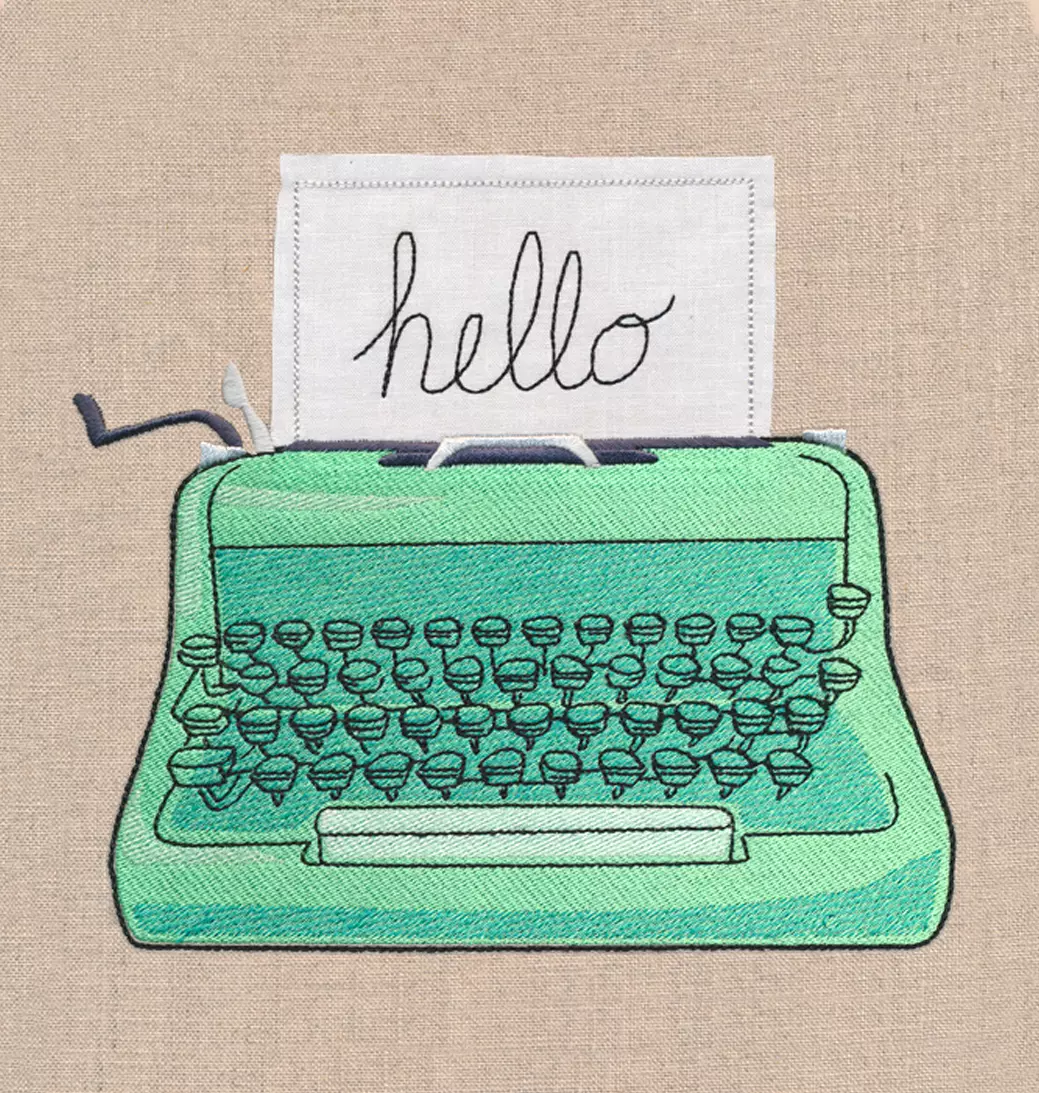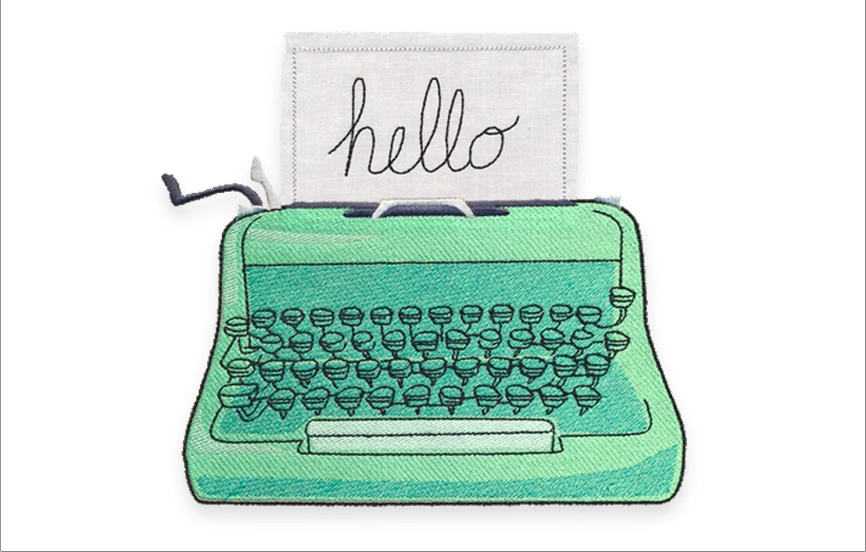Give this Victorian crafting fad a modern update! Applique machine embroidery makes stitching crazy patchwork simple and straightforward. Irregular shapes, decorative stitching, and your choice of rich fabrics combine to make each design unique.
This tutorial demonstrates how to stitch both crazy patchwork applique designs and in-the-hoop crazy quilt blocks. The steps for both types of designs are similar. For the quilt blocks, a cutting line stitches at the end. We'll show you how to stitch both types of designs!
Supplies
To stitch a crazy patchwork design, you'll need:
- Crazy patchwork applique or in-the-hoop quilt block embroidery design
- Fabric to embroider on (for quilt blocks, this will be the block base, and will show as part of the patchwork)
- Small pieces of fabric for applique (for these quilt blocks we used satin, quilter's cotton, and velveteen)
- Medium weight cutaway or sheer mesh cutaway stabilizer
- Temporary spray adhesive
- Cutting mat
- Quilting ruler
- Rotary cutter
Designs Used
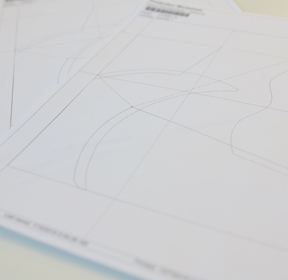
When you download a crazy patchwork design you will see multiple files. One is the full embroidery file. Another is a dieline file, marked with the letters DL. Dielines are used to cut the applique fabric to the right shape and size.
Print the dieline files - these are the files with "DL" - at full size using embroidery software. For the crazy quilt blocks, there are four pieces of fabric in each block, so print four copies of the dieline files.
For quilt blocks, you will also find a printable nine-patch planning sheet (this file ends in .PDF).
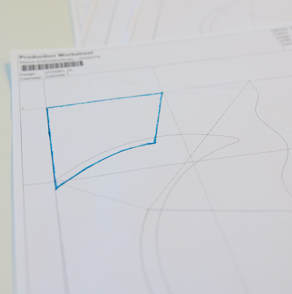
The applique pieces overlap, so that means the dielines on the printout overlap too. Since the pieces overlap, the dielines will need to be cut along the outer lines of the shapes (the first piece of this block is outline in blue).
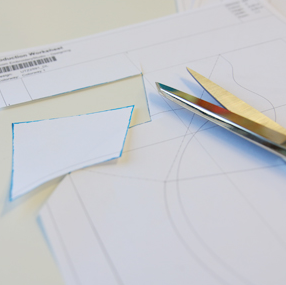
Cut around shapes around the outer lines (as shown).
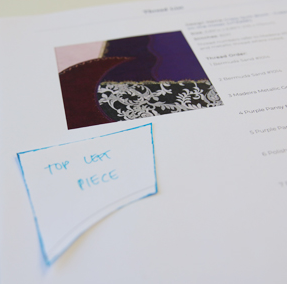
After cutting each piece, reference the photo of the finished design (this image is on the website and also on the color change sheet). Match the shape to the finished design and label each piece. This will help to keep the pieces organized. Also, reference the color change sheet to see the order the pieces go down and what we named each piece.
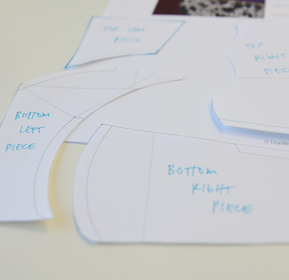
After each dieline is cut and labeled, it's time to cut the fabric pieces.
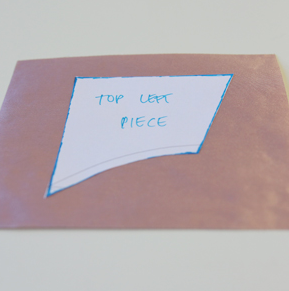
Spray the back side of the paper with a bit of temporary spray adhesive and smooth it onto the fabric.
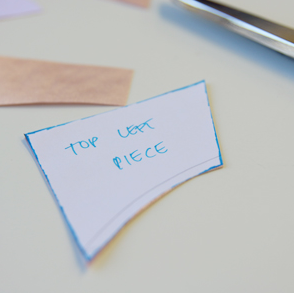
Then, cut out the shapes but do not remove the paper.
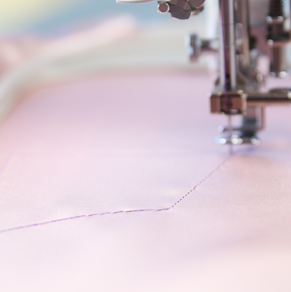
Another option for cutting out the fabric pieces is to stitch the dieline file directly onto fabric. Load the dieline file into your machine (that's the file that ends in "DL"). Hoop the fabric and stitch the dieline directly onto the fabric.
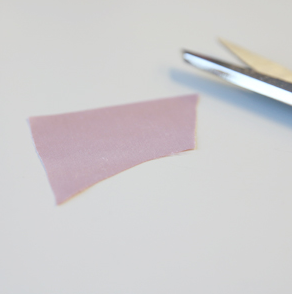
Then, unhoop the fabric and cut out the shape.
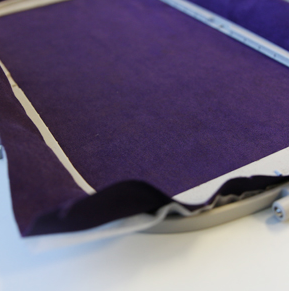
Next, spray a piece of cutaway stabilizer with temporary spray adhesive, and smooth it on the back of the fabric to be embroidered.
For quilt blocks, sheer mesh cutaway stabilizer works well to support the stitching while keeping the block light and flexible. Note that this base fabric will show in the finished design as one of the "patchwork" pieces.
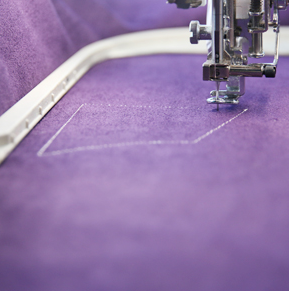
Load the full embroidery file into the machine. Attach the hoop to the machine and embroider the design. The first placement dieline will sew.
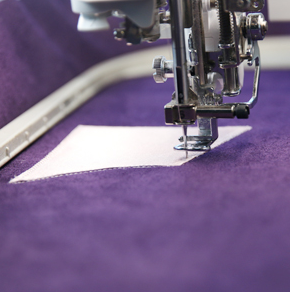
After the dieline has sewn, remove the hoop from the machine, but do not unhoop the fabric. Spray the back side of the fabric with adhesive, remove the paper, and place the fabric piece right inside the dieline shape.
Attach the hoop back onto the machine and match the top thread to the fabric piece color. Continue embroidering the design. A tackdown stitch will sew next, which binds the fabric piece to the bottom fabric.
Match the color of the top thread with each fabric piece as you sew. Be sure to follow along on the color change sheet as you sew.
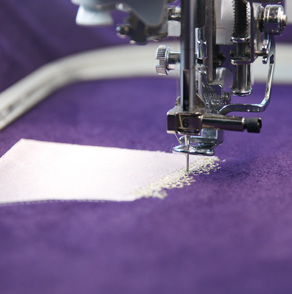
Decorative stitches will sew throughout the design - watch the color change sheet for these steps.
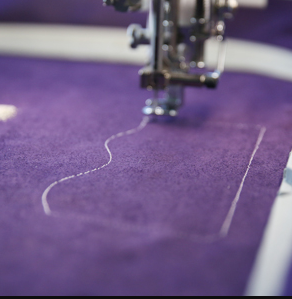
The dieline for the next fabric piece will sew. After the dieline sews, add the fabric piece and continue with the design. Another tackdown stitch will sew.
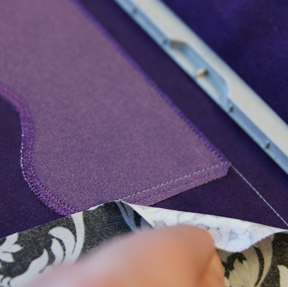
Since the fabric pieces overlap slightly, some of the dielines will sew over a portion of the previous fabric piece. After the dieline sews, remove the hoop, and add the fabric piece.
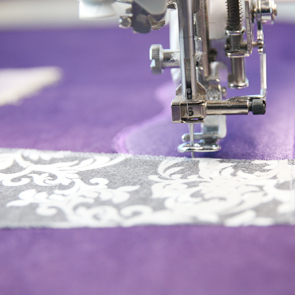
Attach the hoop back onto the machine, and continue with the design - the tackdown for the overlapping fabric piece will sew next.
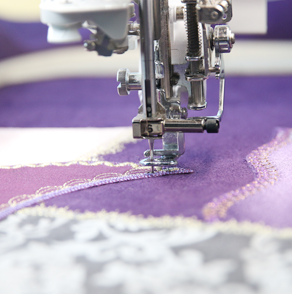
Continue with the design until all the pieces have been added and the decorative stitches have sewn.
For applique embroidery designs, a decorative border will sew at the end to complete the design.
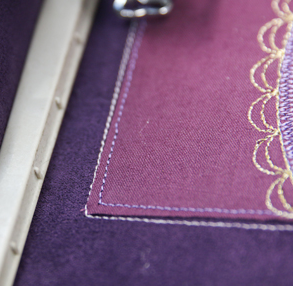
For quilt blocks, a cutting line will sew last. This line will be used to cut the quilt block. This line will sew just a bit outside of the outer edges of the fabric pieces.
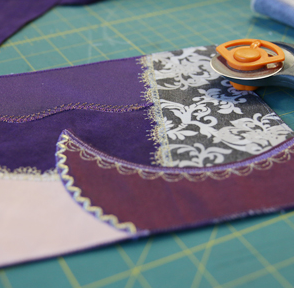
When the block has finished, unhoop the fabric and place it onto a cutting mat. Using a quilting ruler and rotary cutter, cut right along the sewn cutting lines of the block. And your block is complete!
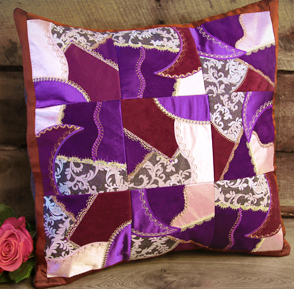
We made a Nine-Patch Quilted Pillow using these blocks. Click here for the instructions - this project is from our sister site, Embroidery Library.
Use these blocks to make quilts, pillows, placemats, wall hangings, and more! Print the planning sheet (the files ending in .PDF) and use colored pencils to plan your project. Using different fabric prints, colors, textured fabrics, and thread color, the possibilities are endless!

